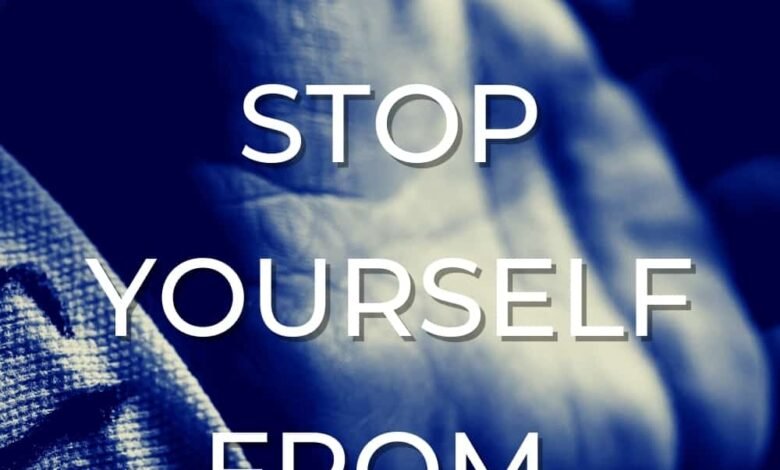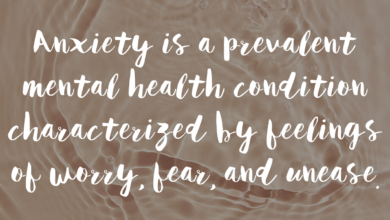7 Ways To Quit Self-Harm For Good

Affiliate link notice: As an affiliate of BetterHelp and other third-party vendors, We may receive compensation if you make a purchase using the links provided on this page. For more information, visit our disclosure page.
Last Updated on November 6, 2022 by Randy Withers, LCMHC
Self-harm is the act of intentionally hurting yourself to feel pain or to perhaps distract yourself from the agony of mental disorders like anxiety, depression, and post-traumatic stress. One of the most common forms of self-harm is cutting.
Self-harm can become a habit. But with the right support, you can learn how to stop cutting.
Anyone of any age may be affected by self-harm, but it is more common among people in their teens.
The sense of relief from cutting can be so reinforcing that it may be difficult to stop doing it, compelling people to cut again the next time they feel overwhelmed.
If cutting becomes a habit, you may find it hard to resist the urge, but there are many ways to learn to stop. Not every strategy works for everyone, but most people will find a way that works for them.
How To Stop Cutting: 7 Self-Harm Reduction Techniques
This article explores strategies to stop cutting. It also looks at ways to manage the causes of self-harm and what support is available.
Here are seven ways to stop yourself from cutting.
1. Distract yourself
A person can use distraction tactics, such as going for a walk or listening to music, to help resist the urge to cut.
Research suggests that young people who self-harm often do so impulsively. For this reason, cutting prevention methods focus on finding alternative ways to manage distress.
Distraction tactics may help resist the urge to cut. A person can try to distract themselves by:
- calling a friend
- counting to 1,000
- watching a film or favorite TV series
- making a cup of tea or a snack
- doing some housework
- going for a walk
Distracting themselves may help a person delay cutting until the urge has passed.
2. Practice self-care
Cutting may be a response to deep emotional pain and sadness. A way to manage these emotions without cutting is through self-care.
Self-care is any activity that promotes well-being by making a person feel soothed or comforted.
Self-care activities to try include:
- having a long bath or shower
- listening to relaxing music
- curling up in a soft blanket
- cooking a healthful meal from scratch
- drawing, painting, or coloring
- using essential oils or a scented candle
- self-massage with coconut or almond oil
- reading in bed
3. Relieve stress
Some people cut themselves in response to feeling stress. One study found that 45 percent of adolescents who self-harm do so to relieve tension or stress.
To manage the body’s response to stress without cutting, the following activities may help:
- practicing yoga at home
- doing deep breathing exercises
- practicing mindfulness
There are many free yoga videos online, including some for beginners.
Deep breathing exercises can be as simple as taking long, deep breaths in and feeling the belly expand each time before exhaling.
A simple way to practice mindfulness is to go for a slow walk and notice everything you see, smell, hear, and touch. This is called a ground technique and it helps with both cutting and self-harm.
4. Release Your Anger
Some people cut to relieve unprocessed anger. For people who experience this, releasing anger in a different way may help.
If a person feels angry and gets the urge to cut, alternative ways to release anger include:
- dancing to aggressive music
- popping balloons or bubble wrap
- going for a run
- going to the gym for a workout
- hitting a cushion
- ripping up paper
- scribbling on paper
5. Express Your Feelings
Sometimes the urge to cut can arise when a person needs emotional release. They may feel numb or overwhelmed by many different emotions that they have trouble expressing.
Instead of cutting, a person seeking emotional release could try:
- writing about how they feel in a journal
- speaking to a trusted friend, family member, or therapist
- watching a sad film and allowing themselves to cry
- listening to music that they can identify with
6. Connect With Others
Connecting with others and pets can help a person feel less isolated.
Some people who cut do so because they feel isolated, misunderstood or socially rejected.
Instead of cutting, a person could try:
- messaging or calling a friend or family member
- playing with a pet or offering to pet-sit for a neighbor
- making social plans to look forward to throughout the week
- joining local community meet-up groups
- finding support groups for people who self-harm
7. Replace the sensation
When trying to avoid cutting, a person may fixate on how it would feel to cut themselves. This can make it hard to resist the urge to cut.
A way around this is to find sensations that are similar to cutting, but less harmful. Some ways to replace the sensation of cutting include:
- rubbing an ice cube across the skin
- taking a cold shower
- drawing on the skin with a red felt-tipped pen
- gently snapping a rubber band against the skin
- clapping the hands hard
- stomping the feet loudly
How to help someone else stop cutting
Research suggests that developing important relationships is a key factor in recovering from self-harm.
To help someone stop cutting, try to provide a safe, nonjudgmental space for them to discuss their feelings.
They may not feel comfortable sharing that they self-harm, so do not push them to disclose this. But do offer them a chance to connect.
Asking open-ended questions can give them the opportunity to discuss their feelings.
Do not worry about having the right answers — just listening to how a person feels and taking their concerns seriously can help.
If someone does share that they self-harm, the Samaritans charity, based in the United Kingdom, suggests some useful questions to ask, such as:
- “Have you talked to anyone else about this?”
- “Would you like to get some help?”
- “Would you like me to come with you?”
If the person is reluctant to get help, a person could say:
- “Do you have someone you trust who you can go to?”
- “If it helps, you can talk to me any time.”
How to Stop Yourself From Self-Harm
A person can make a note of the situation that leads to cutting to help identify triggers.
A trigger is a situation, event, or way of thinking that brings on the urge to cut. Cutting triggers may include:
- work or study stress
- arguments with family members
- feeling rejected by a partner
Every person who cuts has a different set of triggers.
Understanding what triggers the desire to self-harm can help a person avoid those situations or manage them when they occur.
To help identify triggers, make a note of the situation that leads to cutting in a journal. Review this regularly and identify recurring triggers.
A person can then work to reduce those triggers and feel more prepared to manage the urge to cut using some of the strategies above.
Once a person has identified their triggers, they can plan how to resist the urge when it happens. Writing this plan down can help.
Keep this plan handy for when the urge to cut arises. Without a written plan, it is easy to feel overwhelmed or forget tactics that may help.
Cutting and other forms of self-harm are linked with anxiety, depression, and other mental disorders such as PTSD.
If a person who cuts has an underlying mental health condition, receiving treatment will help prevent self-harm in the long term.
Doctors and healthcare professionals can often treat anxiety and depression with a combination of medication and talk therapy.
Certain lifestyle changes and stress-reducing practices may also help, including:
When to see a doctor For Self-Harm
If a person self-harms or feels compelled to start self-harming, they should speak to a doctor.
A recent study found that between 6.4 percent and 14.8 percent of high school-aged boys in the United States have purposefully hurt themselves.
The figure was higher for girls of the same age, with between 17.7 percent and 30.8 percent reporting self-harm.
Despite causing injury, cutting offers some people temporary relief from emotional pain or numbness. Other people who cut say that they do so because they feel the need to punish themselves.
The doctor can help a person find other ways to manage their emotional health. Talk therapy may help with learning how to manage emotions in a safe, sustainable way.
If a person needs immediate help to stop cutting, they can call a self-injury hotline at 1-800-DONT CUT (1-800-366-8388). In the event of an emergency, call emergency services.
Suicide prevention
- If you know someone at immediate risk of self-harm, suicide, or hurting another person:
- Call 911 or the local emergency number.
- Stay with the person until professional help arrives.
- Remove any weapons, medications, or other potentially harmful objects.
- Listen to the person without judgment.
- If you or someone you know is having thoughts of suicide, a prevention hotline can help. The National Suicide Prevention Lifeline is available 24 hours a day at 1-800-273-8255. You can also connect with a crisis counselor by dialing or texting 988.
Final Thoughts
Cutting is a type of self-harm that some people use to manage negative feelings. The temporary sense of relief it may provide can make it difficult to give up the behavior.
With the right support and coping mechanisms, you too can learn how to stop cutting.
Every person who cuts will find a different combination of coping strategies effective. Identifying cutting triggers is essential and can help a person develop a self-management plan and eventually stop cutting.
Let me know if you liked this post. Your feedback is important!
Source link
#Ways #Quit #SelfHarm #Good

